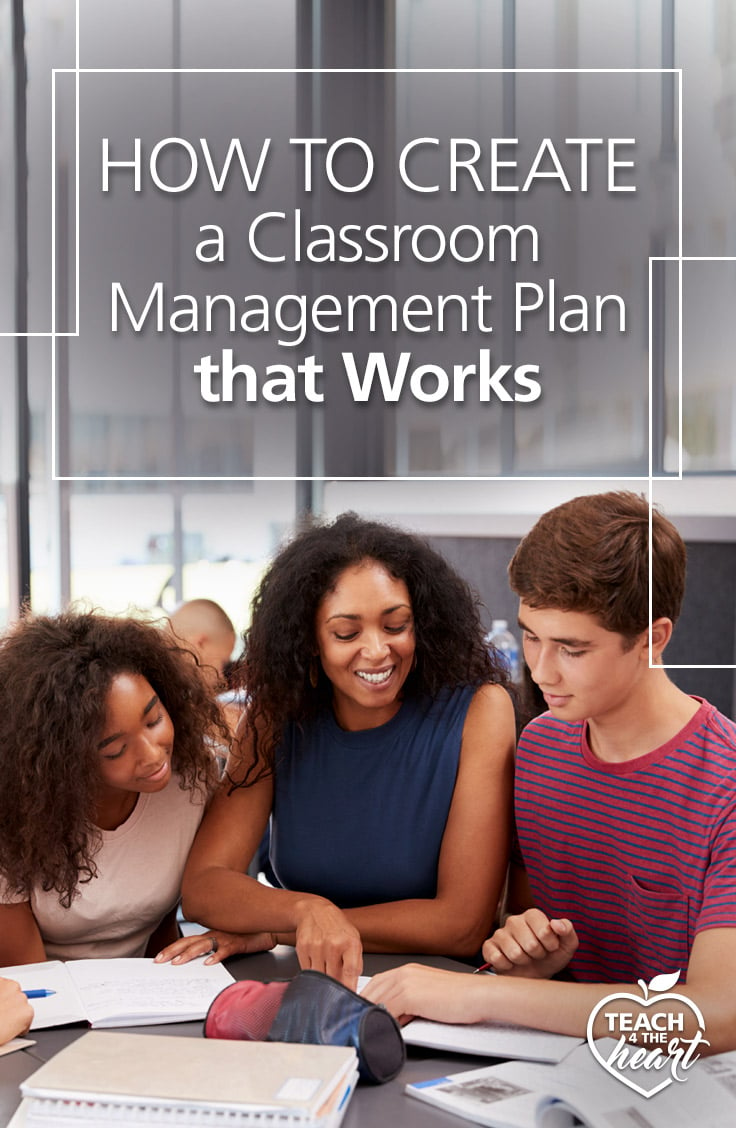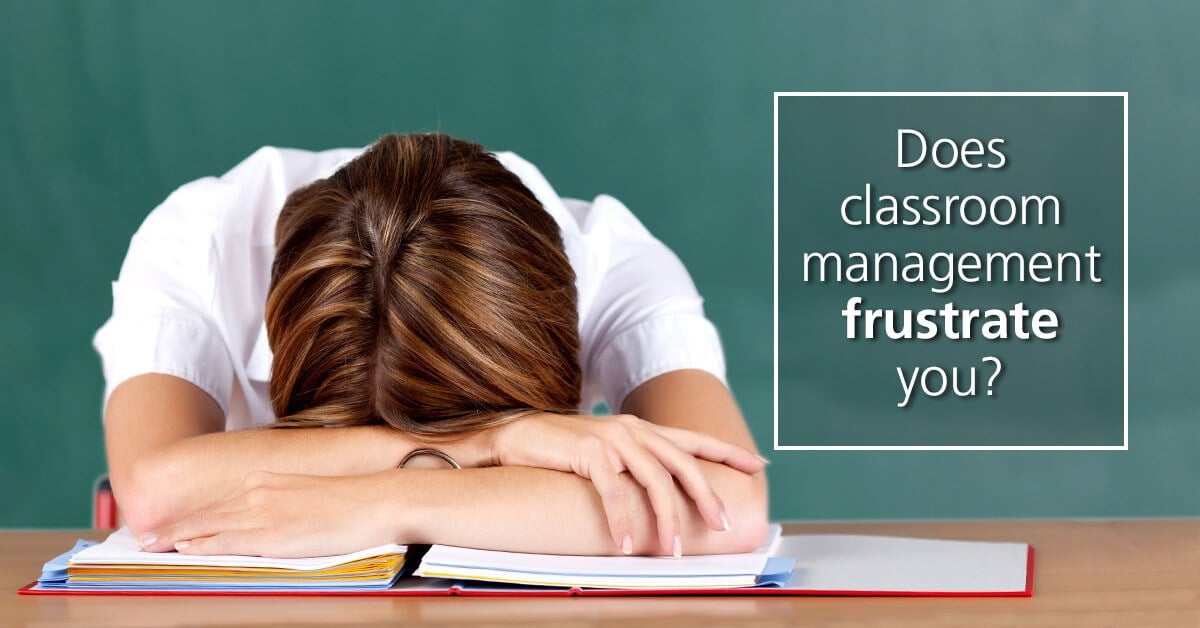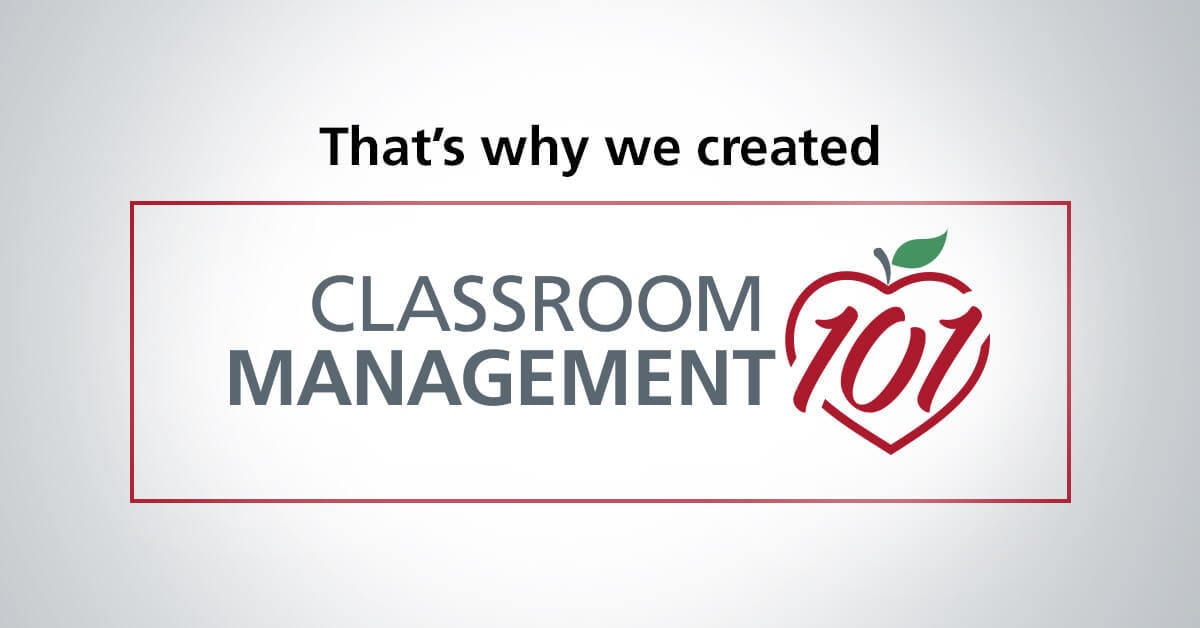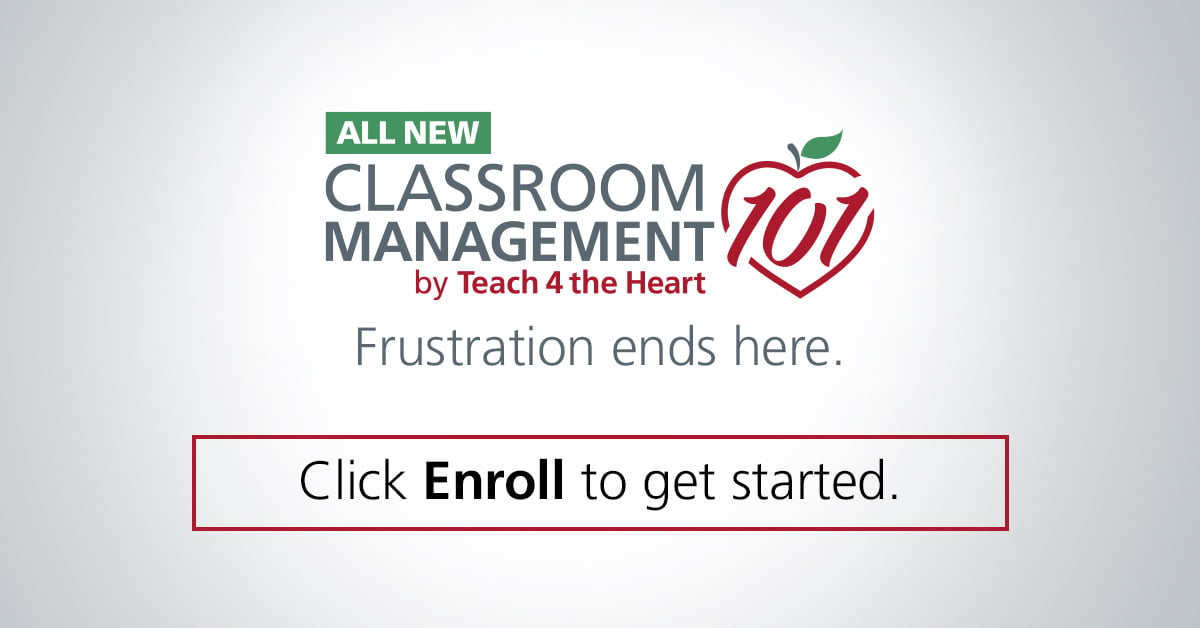
Has classroom management been a struggle? Listen to discover how you can create an effective classroom management plan that will actually work!
listen here:
why you need a written classroom management plan
We often have chaos in our classroom because we as teachers don't really have a plan for how we're going to handle issues. We deal with it really inconsistently, or we don't deal with it at all because we just don't know what to do. A plan is really important and a written plan is even more valuable, because when a plan is in our head, it's actually a lot fuzzier than we realize. There's a lot of wiggle room for us to not really know what we're going to do even if we think we do.
Let’s think about this question: “How am I going to handle talking?” What thoughts come to your head? Maybe you’re thinking, "Well, I know what to do” or "Well, I'll just tell them to stop." Those are really fuzzy plans! When you have to write down what you’re going to do, it forces you to actually see whether or not you have a plan and it requires you to decide ahead of time how you're going to handle various situations, and that is so valuable.
This written classroom management plan gives you confidence and helps you be consistent. Confidence and consistency are huge in classroom management. They're intangible. Students can notice consistency outright, but confidence is something that they notice without realizing it. They don't say, "Oh, my teacher is confident," but they can sense it. When you're confident and consistent, it sends huge signals to your students that they need to get on board, they need to take you seriously, and they need to follow the instructions and procedures that you've set out for your class.
On the other hand, when you're not confident and you're not consistent, that sends huge signals to students that they can get away with inappropriate behavior, they can take advantage of you, and it doesn't really matter whether they do what they're supposed to do. So, when you're confident and you're consistent, it's intangible - but it's also the difference between being the teacher students respect and listen to and being the teacher whose students walk all over them.
You might be thinking, “Well, not all teachers have a written plan.” If you are a veteran that knows what you're doing and you are really confident in your classroom management, you probably don't need a written plan anymore, just like a master chef doesn't need a recipe. But a beginning cook who has hardly ever cooked a meal definitely needs to have a recipe that they're following. So that's what we're doing. We're creating the written recipe. If what you're doing isn't working, I highly recommend putting together a written plan.
Here's how to do it....
Pin for later⤵
Step 1: clarify your expectations
So many issues arise in our classrooms because we haven't actually thought through what we expect of our students. Sometimes we assume students know what they should do without defining what exactly that looks like. So it's very important that we think through every area of our classroom and actually spend time deciding what behavior is and isn't appropriate.
Here are some examples of the types of questions we want to ask ourselves: How should students enter the classroom? Do they go straight to their desk? Are they allowed to visit with friends? What are the expectations there? How should students sit at their desks? When is talking permitted and when is it not, and what level is appropriate? Are students allowed to blurt out answers without raising their hand? If so, when and when not? For what reasons are students allowed to get out of their seats? Will students be held responsible if they fail to bring certain supplies, or will you provide extras? What do you expect from students regarding participation and effort? When are students allowed to use the restroom? What does it look like for students to treat others with respect and what does it look like when they're not respectful?
Okay. These types of questions are getting at clarity, because if you're not clear in your own mind what is an issue in your classroom and what you want it to look like instead, you can never communicate that with your students. You also won't have confidence in your mind about knowing what to address and what not to. So getting clear on your expectations is really key, and writing that down can be immensely helpful as well. So that's step one, clarify your expectations.
step 2: determine your procedures
Expectations and procedures are sometimes lumped together, but I think it's helpful to think of them separately. Here, we are talking about expectations in terms of behavior. What type of behavior am I expecting in all these various situations? Procedures are about what is actually happening in the class. One example of a procedure is: students turn in papers by passing their paper to the person on the left and the last person in the row puts it in the turn-in box. Another procedure is: when we use the restroom, we line up here and 3 students go in at a time.
Now, expectations and procedures do meld together. For example, my procedure for the restroom break would also include expectations for how students will behave. I need both expectations and procedures for restroom break time or for the start of class or for homework. But when you're thinking about procedures, you're thinking specifically about the tactical piece of it. Tactically, what are we going to do? How is this going to work in all these different areas of the classroom?
There are so many areas to think through, such as, start of class, restroom breaks, passing in papers, grading papers, signing out hall passes, getting tissues, lining up, passing back papers, regaining attention, emergency drills, homework, late work, absent students, and so many more.
When you think through every area of your class, think through, “How do we do this?” and “What would help this run smoothly and efficiently?” If you are a new teacher and you've never taught before, you have to think through literally every area. If you've taught in the past, you can take a little bit of a shortcut and just ask yourself, “Which areas were really chaotic? Which things did not go smoothly? In what areas did things get a little crazy?” Ask, “What would make this run more smoothly?” Rethink those procedures and once again, write them down because it forces you to get really clear on exactly what you want it to look like.
step 3: plan positive reinforcement
We definitely don't want negative attention to be the main way students get attention from us. Both natural consequences and positive benefits occur every day in real life, so it's great when our classrooms reflect that reality. We should definitely plan ways to positively reinforce good behavior, good actions, and all the things that our students are doing that we want to encourage.
It's good to plan this so that it doesn't fall through the cracks. Once again, you can say, "Oh yeah, I'm always encouraging. I'll do that for sure." But if you don't plan it, it may or may not happen as much as you want. So it's good to spend a little time in your classroom management plan thinking about how you are going to have positive reinforcement.
There are a couple different ways this can look. You could have a structured reward or encouragement system, like class dojo, class economy points, sticker charts, etc. You can have a structured program or just do it as it makes sense, but you want to think through and plan that. Even if you decide not to use an official system, you still want to think ahead of time, “Okay, what are some things I want to look for? What are some things I want to acknowledge and encourage?”
Once again, if you're a new teacher, you definitely want to think that through. If you're a veteran, you can be more reflective and think about whether or not what you did before worked and if not, consider how you want to be more intentional with positive reinforcement this year. If you need some reward ideas that are free or inexpensive, head to 60+ Classroom Reward Ideas.
step 4: Plan logical consequences
We want to plan some consequences that we can use in our classroom as they're needed. If you're not sure if consequences should be part of your classroom, check out Why Classrooms Need Consequences.
We are going to talk about how to actually plan this. The first thing you want to do with consequences is make sure you understand your school's discipline system, know what consequences are available to you there, and what types of offenses are supposed to result in certain consequences in your school-wide system. It's important to start there, make sure you understand that and have that incorporated into your classroom first.
Depending on how your school is structured, that might cover most things or that might cover hardly anything. So once you make sure you understand your school's discipline system, then you want to consider what misbehavior or issues are not covered there and find some consequences to fill in those holes. For example, when I was teaching, our school had detentions. So that was part of the school-wide discipline system and they were appropriate for certain offenses.
But detention was a very big deal at the school that I taught at. It was two hours long and it cost $20. So it was not designed for really small infractions like talking in class. Instead, a lot of the teachers came up with smaller consequences that they could use for smaller offenses and saved the detentions for bigger or repetitive issues. If you're not sure what ideas to use, we do have a consequence ideas list at 30 Logical Classroom Consequence Ideas.
step 5: plan out how to respond
What you want to do is plan what you're actually going to say or do when various behaviors occur. This is where the rubber meets the road and where you really get your confidence and can be consistent.
Start with your positive reinforcement. Look back at what you've planned for positive reinforcement and actually think about, “What am I going to say when I'm encouraging students for their behavior?” Maybe even practice it. Write it down so that you're ready to go.
Then think through misbehavior. You want to plan exactly what you'll say and how you'll respond to all kinds of common classroom issues. If a student is talking without permission, what are you going to say? Write it down. If they're blurting answers, if they're disrupting class, if they're disrespectful, if they're rude to classmates, if they get out of their seat, if they're not completing their work - think through all these areas. Think, “What am I going to do when students do these things? How am I going to respond?” That involves both thinking about what you’re going to do and exactly how you’re going to say it. Write out exactly what you're going to say. That is so helpful. If you've been struggling, that level of detail in your plan will give you so much confidence and help.
some practical ideas
Here are a few quick ideas on addressing misbehavior:
- Re-do: One option is to have students re-do it the right way. For example, if a student runs into class, you can say, "You need to go back out and come in correctly." That could be a response that you planned.
- Re-direct: A re-direct is when you divert students’ attention back to refocus them on what they should be doing. That can be an appropriate way to deal with certain issues.
- Quick correct: Certain things just need a quick correction. For example, if a student has their head on the desk, they probably don't need a consequence. You can just say, "George, please sit up."
- A Warning System: A warning system can be really helpful. If you've been following Teach4theHeart for some time, you’ve heard about warning systems, but a warning system is basically where you give students official warnings with a yellow card, or class dojo, or writing names on the board, etc. This works really well for something like talking where you would give one or two official warnings and possibly not give a consequence until the third offense in the given class period.
- Pocket Phrases: A pocket phrase is a saying you pull out of your pocket that you have ready to go, and you use it repeatedly. Love & Logic has a lot of these, but an example is something like, “I care about you too much to argue with you.” So that's a phrase you can pull out whenever a student is arguing.
- A "Catch-All" Phrase: I definitely recommend that you have a catch-all phrase that you can use whenever there is a situation where you don’t know what to do. As much as you plan, there's always going to be something that throws you off. That is just a teacher's life. So you want to have a catch-all phrase ready that you can pull out and use if you don't know what to do. One example is, “See me after class.” That shows the whole class that you’re going to deal with it, but you have some time to think about it first. Another one that you can use, and this one comes from Love & Logic, is, “I'm going to have to do something about that.” Similar idea, right?
I hope that walking through this is really helpful for you and that you're starting to see how valuable this can be. Imagine starting the school year with this type of plan. You will come in confident and you'll know how to handle issues. When you handle issues consistently starting the first day of school, something magical happens: students really respond to that.
want help creating your plan?
We walk you through the process step-by-step in the All-New Classroom Management 101 online course.
If you're tired of disruptions and behavior issues, that frustration ends here.
We'll help you create a classroom management plan that WORKS so you can stop being frustrated by student misbehavior actually enjoy teaching again.
Find out more about the All-New Classroom Management 101 here.
job placement service now free!
Are you looking for a new opportunity in a conservative Christian school classroom? American Association of Christian Schools represents 700 conservative Christian schools and many of them are looking for additional teachers. AACS placement service is a great place for you to connect with Christian schools that are looking for teachers. To register, visit the AACS website and click the red Placement Service box on the right. You'll then be presented with a Statement of Faith that will help determine if a conservative AACS school is the right fit for you and you'll be directed from there. This placement service is free to teachers looking for opportunities in Christian schools. Check it out here.
resources mentioned:
Why Classrooms Need Consequences
30 Logical Classroom Consequence Ideas
Your Smooth-Running Class been replaced with the All-New (and even better) Classroom Management 101. Check it out here.
Looking for A Helpful Jumpstart with classroom management?
Check out our free class: How to Reduce Disruptions without Yelling, Begging, or Bribing.
spread the word!
Did you find this post helpful? Clue in your fellow teachers by sharing the post directly (just copy the URL) or by clicking one of the buttons to automatically share on social media.

This article may contain affiliate links. This means that if you purchase a resource after clicking the link, Teach 4 the Heart may receive a small commission at no extra cost to you. Thanks for helping support Teach 4 the Heart in this way.













Very informational and knowledgeable post.